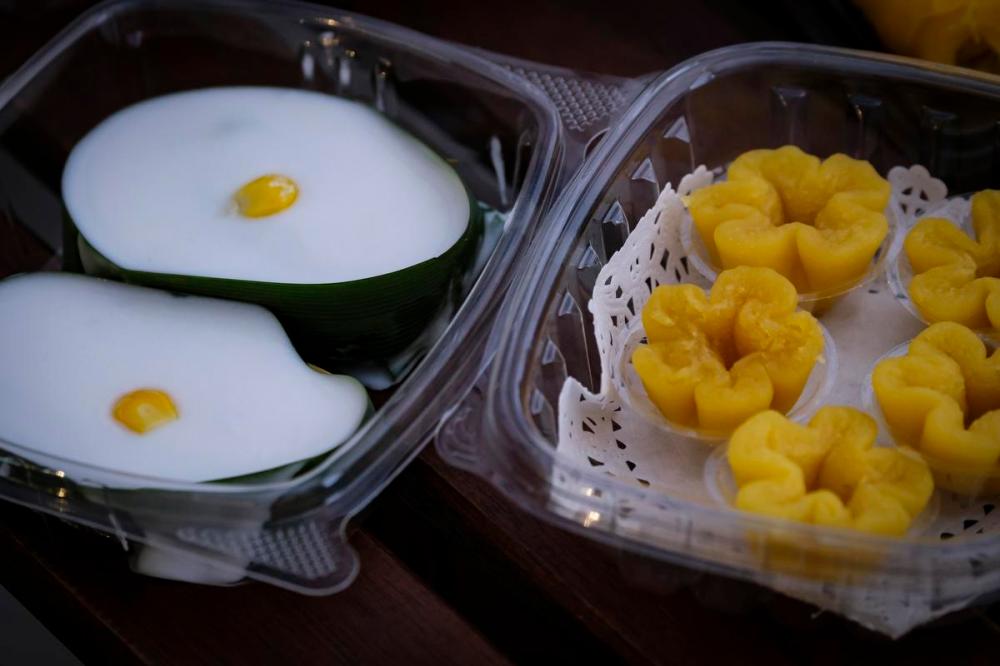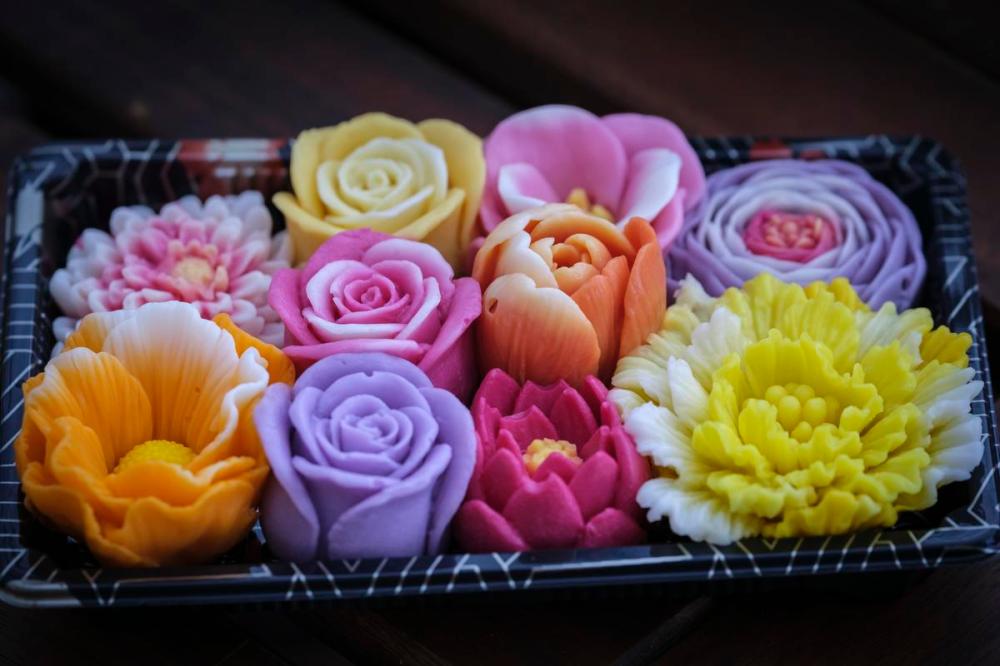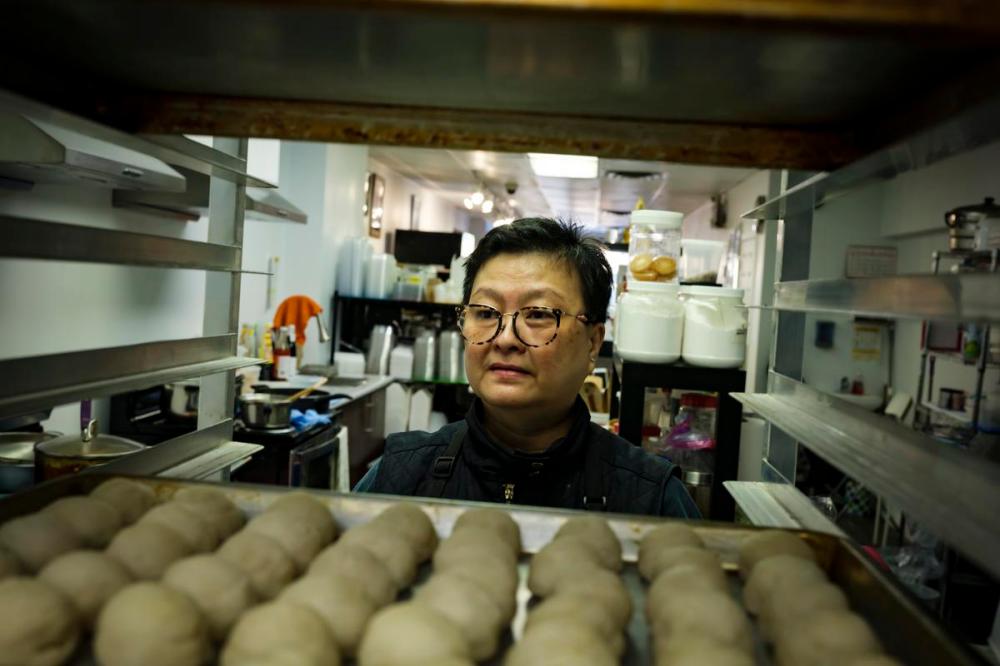Where to find gorgeous Thai desserts for your sweetie
Advertisement
Read this article for free:
or
Already have an account? Log in here »
To continue reading, please subscribe:
Monthly Digital Subscription
$1 per week for 24 weeks*
- Enjoy unlimited reading on winnipegfreepress.com
- Read the E-Edition, our digital replica newspaper
- Access News Break, our award-winning app
- Play interactive puzzles
*Billed as $4.00 plus GST every four weeks. After 24 weeks, price increases to the regular rate of $19.00 plus GST every four weeks. Offer available to new and qualified returning subscribers only. Cancel any time.
Monthly Digital Subscription
$4.75/week*
- Enjoy unlimited reading on winnipegfreepress.com
- Read the E-Edition, our digital replica newspaper
- Access News Break, our award-winning app
- Play interactive puzzles
*Billed as $19 plus GST every four weeks. Cancel any time.
To continue reading, please subscribe:
Add Free Press access to your Brandon Sun subscription for only an additional
$1 for the first 4 weeks*
*Your next subscription payment will increase by $1.00 and you will be charged $16.99 plus GST for four weeks. After four weeks, your payment will increase to $23.99 plus GST every four weeks.
Read unlimited articles for free today:
or
Already have an account? Log in here »
Hey there, time traveller!
This article was published 03/02/2022 (1365 days ago), so information in it may no longer be current.
It’s easy to get overwhelmed at Patchmon Su-Anchalee’s dessert shop. There are hyperrealistic blooms made of coconut milk; salty-sweet golden brown cookies; little bundles of banana leaf-wrapped desserts concealing two-bite surprises; smoky shortbreads; desserts once reserved for royals available year-round.
The bakery first opened in 2015 on the city’s west end before relocating to a more central and larger location downtown at Dundas St. W. and McCaul last summer. The shop has gained a following, not just among Southeast Asian communities, but also those seeking gluten free and vegan desserts (many Thai desserts don’t use wheat flour, gelatin or dairy). It’s all handmade by the self-taught Su-Anchalee, and the shop is only open on Saturdays for now, so customers are told to place all their orders online first to avoid disappointment.
The family came to Toronto from Bangkok about 20 years ago, and, in addition to introducing Thai confections to the locals, the shop is a way for them to stay connected to their Thai roots.
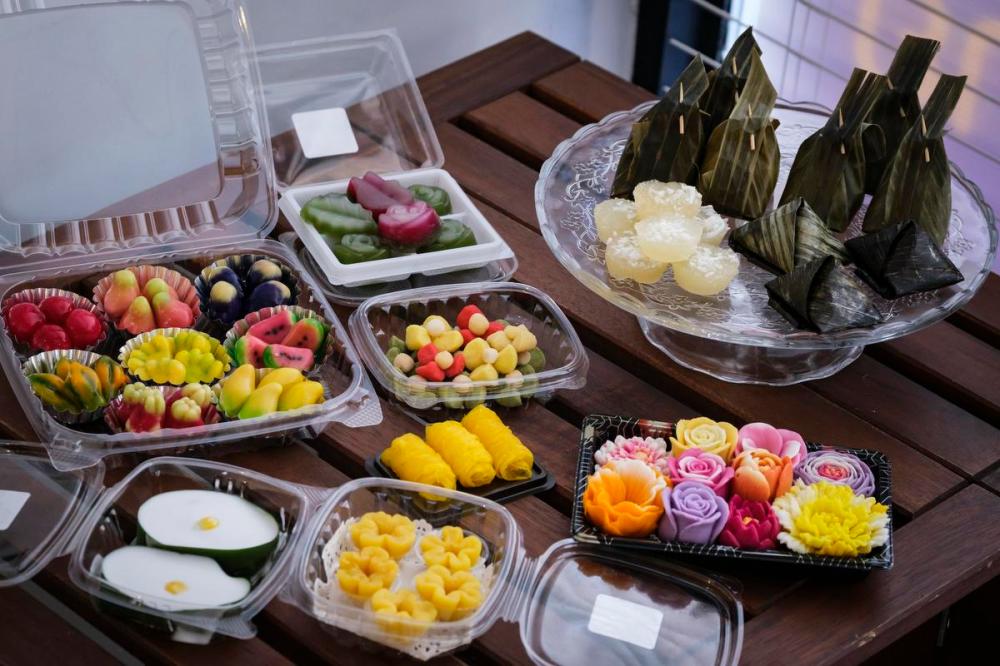
“I came here when I was 10 so watching my mom make the desserts, and having to learn about them so I can explain it to customers helps me stay engaged with Thai culture,” says Aleen Tangsubutra, Su-Anchalee’s daughter, who works at the front of the bakery.
The shop also has a never-the-same, once-a-week lunch menu of grilled items, curries, salads or, really, whatever Su-Anchalee feels like making. “We get asked a lot where we get Thai food in the city,” Aleen said. “But we just eat my mom’s food so she just started making more of it for customers.”
For those craving sweets, Patchmon’s should be on the top of the list for the sheer variety alone. Here’s a breakdown of some of their offerings below. (The English spellings of these desserts can vary depending on who’s spelling it out phonetically, but, for the sake of simplicity, we’re going with how the shop writes it out).
Kanom chun (coconut layered cakes)
The word “khanom” translates to dessert in Thai while “chun” means layer, and this dessert symbolizes prosperity. Layers of tapioca flour flavoured with pandan and coconut cream are individually steamed to create the stacked appearance. Kanom chan is typically served as squares, but Su-Anchalee prefers a floral shape.
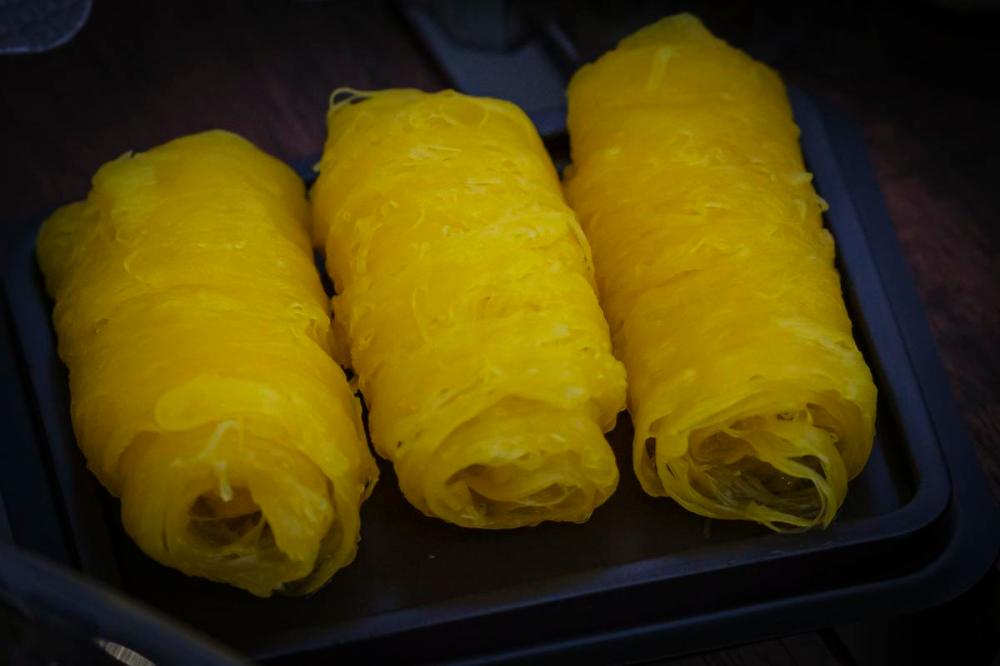
Look chup (mung bean mock fruits)
These detailed mock fruits are believed to have originated from Portuguese traders who made similar fruits from marzipan. In lieu of almonds in Thailand, mung beans and coconut cream were blended to create a paste that Su-Anchalee shapes into various fruits by hand, painted and given a shiny coat of agar agar. Intensive in both time and labour, look chup was historically reserved for royals.
Ta goe (sweet tapioca with coconut cream)
Underneath a layer of salted coconut cream is a bed of sago, young coconut and corn all held together by a fragrant banana leaf. “A lot of Thai desserts are salty and sweet so you have to eat the layers together,” said daughter Tangsubutra.
Tong yib (pinched golden egg yolks)

This golden dessert is made by dropping an egg yolk mixture into a jasmine-flavoured sugar syrup. It’s then pinched to form a flower with a pancakelike consistency. Su-Anchalee says it’s one of the most technically challenging desserts because the egg mixture has to maintain an even thickness and round shape when cooking in the syrup.
Foi tong (golden egg yolk threads)
This is similar to tong yib, but doesn’t end in the shape of a flower. The egg mixture is drizzled by hand in a continuous circular motion into the syrup to create delicate threads that Su-Anchalee spins into a bundle using a chopstick. Each bundle is made of 60 spins of the hand. You can tell the skill level of the person who made them, she says, by examining the individual threads, which should be straight and not wobbly.
Gleeb lum duan (Thai flower-shaped cookies)
The shortbread gets an aromatic boost when they’re smoked with a Thai candle that’s specially made for flavouring desserts. The fragrance is more floral and herbal than woody, which is fitting because these cookies are made to resemble the lamduan (hence the cookies’ name), or white cheesewood flower, a plant found in Thailand.
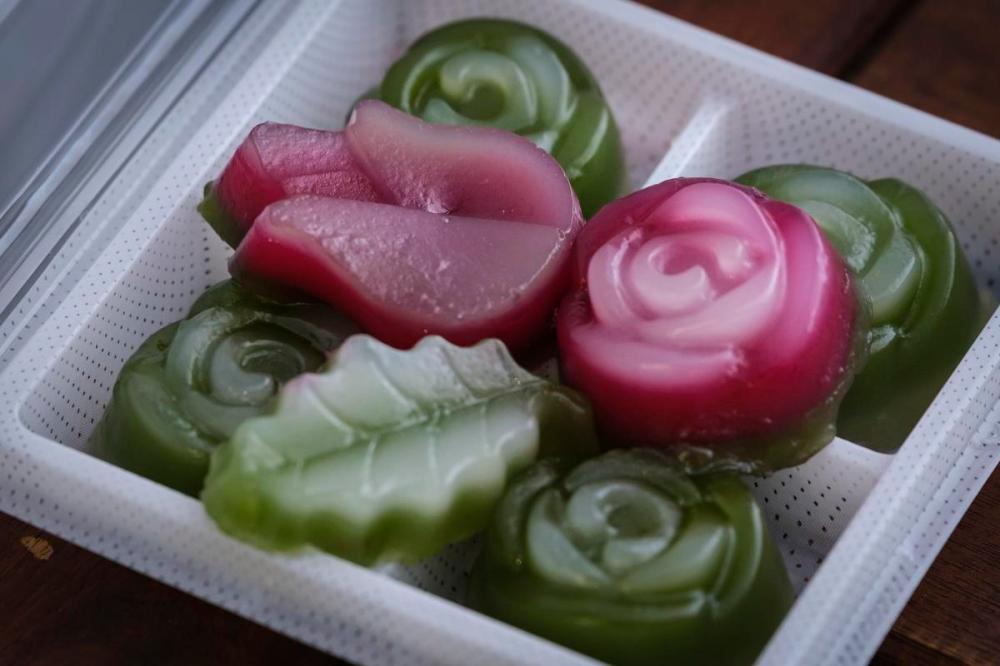
Woon gati (premium coconut jellies)
These show-stopping flowers are made from agar agar, coconut cream, sugar and salt. Those who aren’t accustomed to agar agar-based desserts should note that they’re more crumbly and delicate in texture than gelatin. The colours change depending on Su-Anchalee’s mood, but they’re usually bright and warm colours.
Kanom mun (steamed cassava cakes)
Grated min (cassava) is mixed with tapioca flower and then steamed and topped with shredded coconut to create these not-too-sweet two-bite wonders.
Kanom Tian (stuffed dough pyramid)
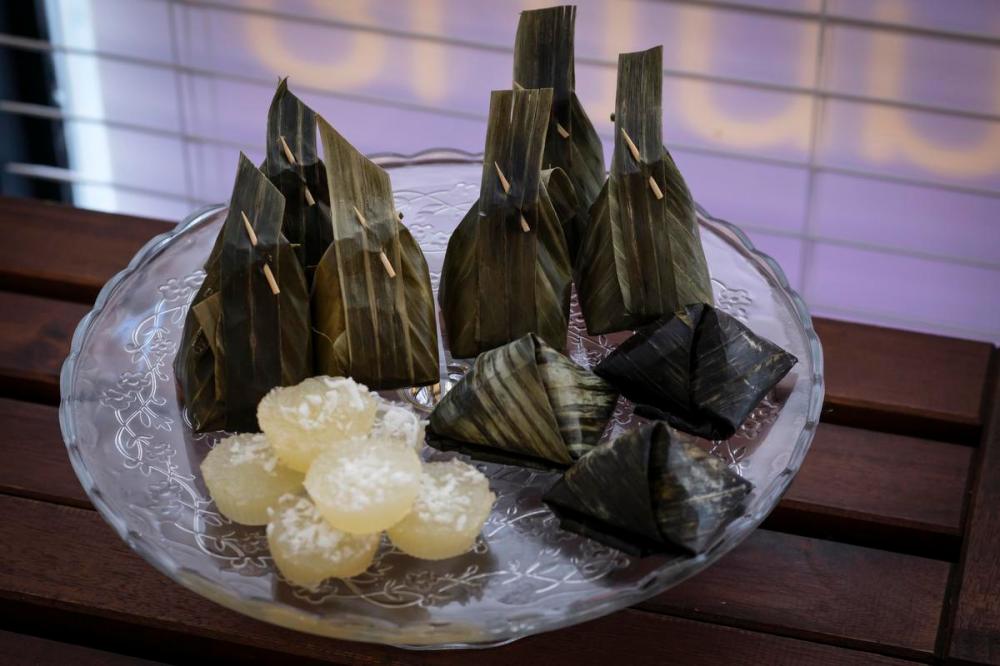
This salty-sweet dessert has a centre of mung bean, shallots and black pepper enveloped with glutenous rice flour and pumpkin then steamed in banana leaves.
Kanom sai-sai (steamed flour with coconut filling)
A favourite of Su-Anchalee’s and perfect for coconut lovers, kanom sai-sai (sai-sai means to put in the filling) has a centre of grated coconut and browned coconut sugar wrapped in a mixture of glutenous rice flour flavoured with slightly salted coconut cream.
Kanom tom gulay (steamed banana cakes)
Thai bananas (smaller and sweeter than the Cavendish variety common in the West) are wrapped with black beans and sticky rice before they’re steamed for two hours so the banana can develop a deep purple hue.
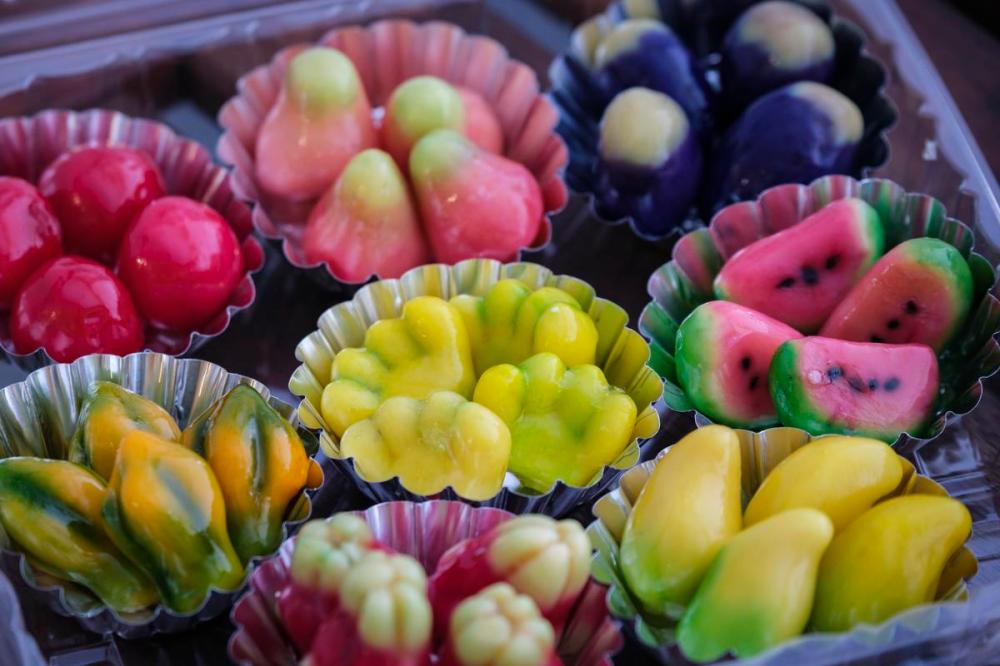
Karon Liu is a Toronto-based food reporter for the Star. Reach him via email: karonliu@thestar.ca
